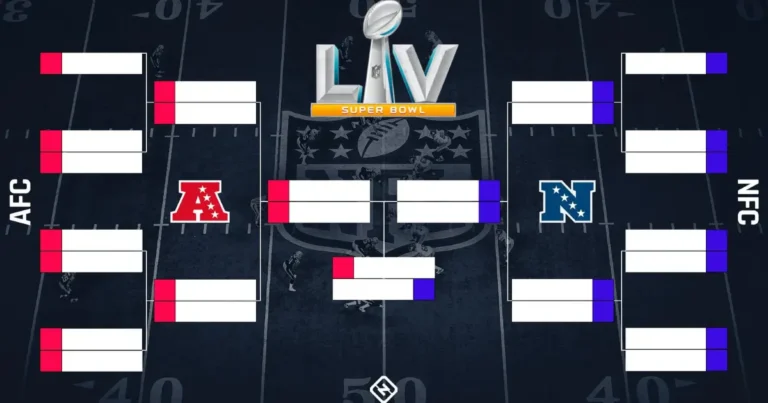What is the Average Swing Speed for a Man?
Golf swing speed is an important component of the golf swing. The speed of the club head traveling through the ball has a direct impact on distance. Faster swing speeds allow golfers to hit the ball farther. For male amateur golfers, average swing speed falls within a range of about 80-100 mph with a driver. Understanding where your personal swing speed falls within the expected range for your gender and ability level can help you evaluate areas for potential improvement. This article will explore the average golf swing speeds for male players and the factors that influence driving distance.
Average Swing Speed for All Golfers
The average swing speed for all golfers, including both professionals and amateurs, is around 93 mph. This encompasses golfers across all age groups and ability levels. 93 mph is fast enough to drive the ball 250+ yards by an average golfer. Professionals and elite amateurs have much faster swing speeds, but casual and novice players swing slower and bring down the overall average. Most amateur male golfers have driver swing speeds between 80-100 mph.
Average Swing Speed for Professional Golfers
On the PGA Tour, the very best players in the world, average driver swing speed is about 113 mph. This allows professionals to launch drives over 300 yards on average. Long drive specialists can reach even faster speeds above 130 mph. Professionals are on the extreme high end of swing speed due to immense talent and year-round structured practice routines refining their powerful, efficient swings. Even senior players on the PGA Champions Tour swing at over 100 mph on average. The fastest recorded swing speed ever was a 152 mph drive by long drive competitor Maurice Allen in 2019.
Average Swing Speed Based on Age and Ability
The average golf swing speed expected for men varies based on both age and playing ability. Younger, low handicap golfers naturally swing faster, while older and high handicap players tend to have slower speeds. Here is a breakdown of approximate average swing speeds for men based on age and skill level:
Novice/High Handicap Golfers
- Ages 20-29: 85 mph
- Ages 30-39: 83 mph
- Ages 40-49: 80 mph
- Ages 50-59: 76 mph
- Ages 60-69: 72 mph
- Ages 70+: 68 mph
Intermediate/Mid Handicap Golfers
- Ages 20-29: 95 mph
- Ages 30-39: 93 mph
- Ages 40-49: 90 mph
- Ages 50-59: 86 mph
- Ages 60-69: 82 mph
- Ages 70+: 78 mph
Advanced/Low Handicap Golfers
- Ages 20-29: 105 mph
- Ages 30-39: 102 mph
- Ages 40-49: 99 mph
- Ages 50-59: 94 mph
- Ages 60-69: 89 mph
- Ages 70+: 84 mph
These averages provide general expectations for players to evaluate their swing speeds compared to golfers of similar age and handicap. Keep in mind elite amateur golfers and former college players may swing faster than these guidelines. And within any age/skill group there is variability in swing speeds among different golfers as well. But in general, younger and lower handicap players swing faster due to athleticism and practice focused on speed training.
What Impacts Driving Distance Besides Swing Speed?
While swing speed has the greatest influence, several other factors also impact driving distance. The quality of ball strike, launch angle, spin rate, shaft flex, and optimization of equipment all affect how far you can hit a driver. Optimizing these specs for your personal swing can help maximize distance even for slower swing speeds. Taking lessons and practicing sound swing mechanics is also key. Two golfers with the same swing speed but different quality of strike, launch conditions, and spin rates could have a 40 yard difference or more in driving distance.
Factors That Influence an Individual’s Swing Speed
Many physical and technical elements influence the driver swing speed an individual golfer can achieve. Here are some key factors:
- Age – Swing speed naturally declines with age starting around 50 years old due to loss of flexibility and fast-twitch muscle fibers. Staying active can diminish declines.
- Athletic Ability – More athletic, coordinated, and stronger golfers swing faster since the swing requires explosive force production.
- Technique – Efficient swing mechanics, sequence, and delivery maximize club head speed generation.
- Practice & Training – Golfers who perform speed training swing faster versus recreational play alone.
- Shaft Flex – Shafts with appropriate bend profile maximize speed for each golfer’s transition force.
- Equipment Optimization – Properly fit driver loft, length, weight, and other specs boost swing speed.
While some factors like age are out of your control, many elements can be addressed to increase swing speed. Evaluating these controllable factors with your golf pro can set you on the path higher speed development.
Is My Swing Speed Good Enough?
With average swing speeds ranging from 68 mph to 105+ mph for men depending on age and ability, almost any speed can drive the ball sufficiently if equipment and swing delivery are dialed in. Recreational golf is more about consistency, shot making, short game skill, and enjoying time on the course versus extreme distance.That said, many golfers wish they could gain 10, 20, 30+ more yards off the tee. More distance equals more fun for most!
If you are not satisfied with your driving distance and suspect your swing speed is holding you back, taking a baseline measurement is key. Modern launch monitors and club sensors can accurately measure your exact swing speed in real time. From there you can set personalized speed goals and implement training to start gaining velocity. Even moderate increases of 5-10% can add substantial yards. Remember, every 1 mph of faster swing speed equals 2-3 yards of extra distance. Good luck with pursuing your speed training!
Improving Your Swing Speed
Once you have baselined your starting speed, what steps can help improve it? Here are proven techniques:
- Take Driver Swing Lessons – A teaching pro identifies areas to enhance swing efficiency for more speed. Common fixes involve the backswing, transition, and clearing hips.
- Strength Training – Building golf-specific and full body power via resistance training, plyometrics, and medicine balls.
- Speed Devices – Swing trainers overload and smooth out the speed accumulation pattern to ingrain higher velocity.
- Flexibility Training – Yoga, stretching, and foam rolling routines boost rotational range of motion and speed.
- Swing Analysis Tools – High speed video, sensors, and computer modeling pinpoint personalized speed limiting factors.
- Equipment Optimization – Ensuring properly fit driver shaft flex, length, loft, and weighting.
- Nutrition & Recovery – Fueling the body and managing rest to support maximum athletic performance each round.
With professional instruction, smart practice, technology tools, and athletic performance disciplines working together, sizeable swing speed gains are within reach at almost any age. 15+ mph increases are achieved by trained long drive competitors. Amateurs can realistically add 8-12 mph when fully dedicated to the process.
Speed Training Best Practices
Implementing swing speed training most effectively requires blending several components:
- Warmup & Athletic Prep – Prep the body for speed expression through dynamic stretching, foam rolling, band work, medicine ball drills, and gradual speed buildup.
- Mechanics Training – Ingraining positions, motions, sequencing for efficient speed accumulation via drills, swing aids, video, and launch monitor feedback.
- Power Generation – Progressively overloading the swing with resistance bands, weighted clubs, drivers over 50 inches, and med ball work.
- Recovery Integration – Allowing the neuromuscular system ample rest between intensive speed sessions to regenerate and adapt.
- Nutrient Timing – Fueling speed training sessions appropriately with quick digesting carbs and protein for sustained energy and muscle rebuilding.
- Technical Adjustments – Using measurements, video, coaching to correct form flaws and equipment issues stifling speed potential as they emerge.
- Patience & Persistence – Trusting the process over 6-12+ months as neuromuscular improvements manifest in stepwise fashion, not overnight.
Committing to intensive, purposeful speed training several times per week consistently for an extended period can unlock dramatic velocity improvements. Measure progress monthly using accurate speed measurement tools. Stay motivated watching the numbers climb month to month!
Speed Training Equipment
Implementing advanced speed training methodology requires using specialized sports technology and equipment:
- Launch Monitors – Radar-based sensors like FlightScope measure club head speed with precision along with other ball flight metrics.
- Club Sensors – Devices like Zepp, SwingSmart, and Blast Motion attach to any club to capture swing data.
- Speed Training Drivers – Extreme length drivers like the Speed Stik over 54 inches ingrain faster transition speed.
- Weighted Clubs – Superspeed, Powerchute, and Tour Stix swing trainers challenge the body with resistance load.
- Resistance Bands – Bands in the setup engrain pushing forcefully into the ground for speed.
- Video Analysis – High speed, high resolution capture reveals minute speed leaks unavailable to the naked eye.
Investing in sensors, speed sticks, weighted clubs and video can accelerate development. Also medicines balls, stretch cords, gym equipment, and other fitness gear support power generation. Just ensure to use responsibly with instruction to prevent injury.
While not mandatory, taking advantage of today’s performance technologies allows precision speed coaching. Quantifying swing metrics fosters feedback, accountability, motivation, and validation of training effectiveness. Once basics are established, graduating to tools like 3D motion capture, biomechanical modeling, ground force plates, and muscle activation mapping can take speed optimization to the highest level.
Speed Training Log Template
To track speed training progress, utilize a log template like the example below:
Date: 2/8/2024
Time: 1:30-3:00pm
Location: East Ridge Golf Club
Warmup Activities:
10 minute treadmill jog
Rotational flexibility routine
Resistance band arm circles
Gradual speed wedge and iron builds
Main Training Content:
- 5 swings with 53” driver working on clearing hips ASAP with resistance band
- 3 sets of 10 reps @ 50% speed with 7 oz donut on shaft for stability
- 2 sets of 5 swings with 6 iron overloaded @ 125% normal speed
- 5 full runs at max effort with 51” driver
- 5 final swings focused on balance
Notes & Measurements:
- Peak Speed: 103.4 mph
- Average Speed: 99.2 mph
- Launch Angle: 12.1 degrees
- Ball Speed: 168.7 mph
- Spin Rate: 2321 RPM
- Maximum Distance: 313 yards
Evaluation:
Felt sluggish early on but speeded up well into session. Launch monitor numbers still below last season’s peak but making progress. Need to improve strike consistency. Workable early season baseline to build on.
This template covers key workout specifics along with quantified speed metrics to assess progress over time. Even without launch monitor data, rating energy, soreness and feeling can gauge effectiveness.
Over a series of training cycles, students of the game can watch swing speed rise while drops indicate rest or correction may be needed. Always remember speed gains happen slowly over time, not day-to-not. Be patient and keep working!
Conclusion
Knowing the average swing speeds for men based on age and handicap provides context for golfers striving to improve pace. While amateur players may not reach 113+ mph Tour swing speeds, moderate gains are realistic following dedicated practice. Dialing in sound mechanics, generating more power, and optimizing equipment can add meaningful yards for golfers at almost any skill level.
Committing to an intelligent, progressive speed training regime can lead to some very fast results in the long run. Just remember that sound fundamentals, consistency, mental game and course strategy matter much more than extreme distance for scoring well. Keep speed training fun and safe too using athletic best practices guided by your golf pro. Mastering your personal speed capabilities promotes confidence, capability and satisfaction next time you stride up to the tee.







